Video mapping is spectacular! Compilation of interesting installations and thoughts on how to make a projector a means of earning
The fact that the projector can be used not only for showing presentations or watching movies is not news. As well as the fact that a spectacular presentation of a product or idea is, if not a pledge, but certainly not the last note in a study of a successful business, for which it is important to show the product “face”.

Recently, surfing the net in search of fresh Epson mentions, I came across several galleries of companies that are creating 3D or AR mapping on a variety of objects, starting with “flat” projections using 3D animation and special effects and ending with much more interesting projections on the "bulk" products and buildings with the effect of augmented reality.
But I was not so much interested in the video projections themselves, as in the fact that the companies are of a rather modest scale. This is a small business! From direct hands, inexpensive multimedia projector and computer.
And I was curious to look at a couple of examples and estimate what it might take to create such a business and get some profit from it. And at the same time independently figure out how to prepare a mapping for flat and cross AR-projections on a three-meter wedding cake with “improvised means”.
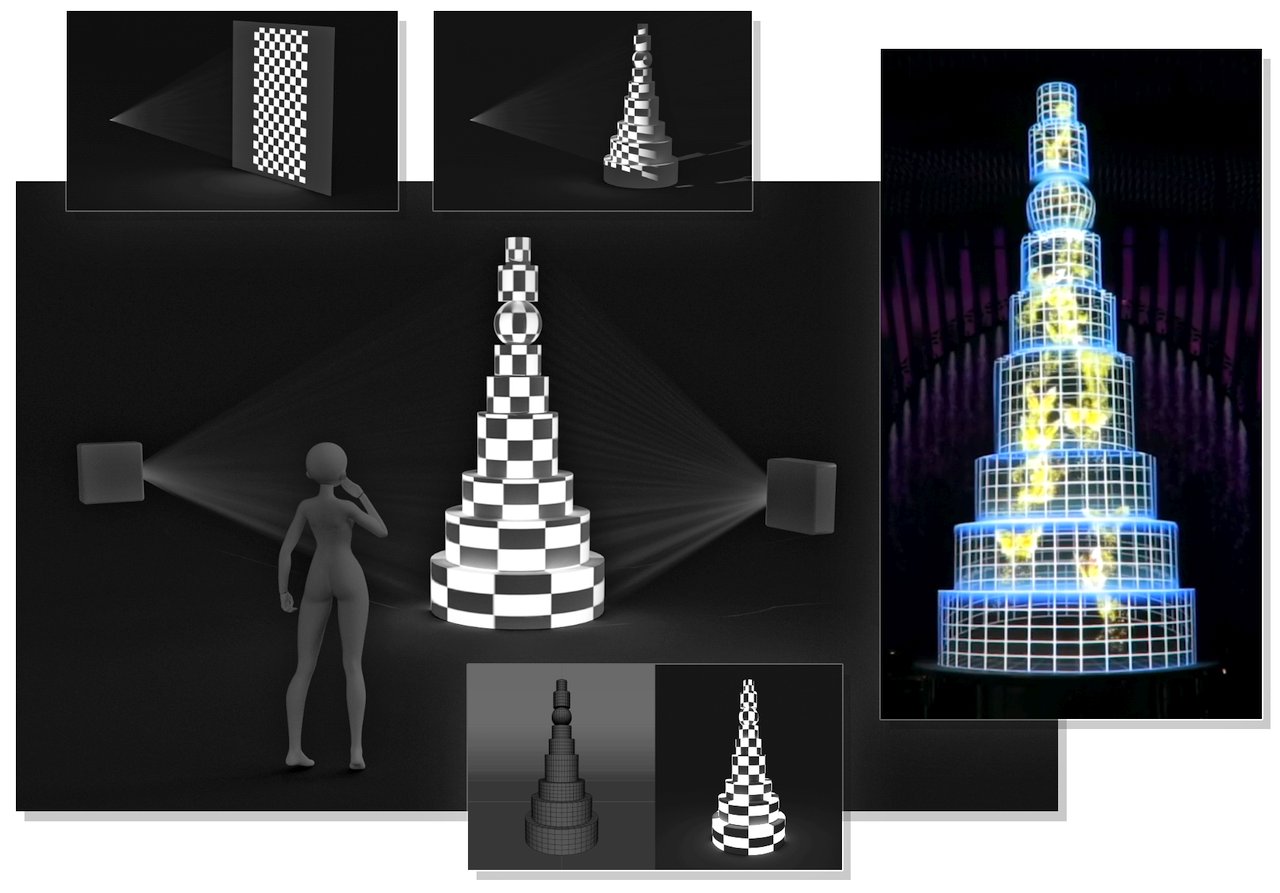
Business from a projector and computer
To begin, consider the example of Flashlines, which specialize in the organization of AR-projections of different scales. Despite the five and a half page Spartan site , FL has something to show that they do on their instagram .

The audience engagement is not the highest (including on YouTube ), but, apparently, there are enough of them to do business. At the same time, even the campaign on Indiegogo was conceived to promote their own software for the iPad.
But not the point. The main thing that can be observed by studying their work is that a significant part of installations has a small-medium scale and is performed at night or in the semi-darkness . And it turns out that it is not necessary to shell out for a super-bright expensive installation projector in order to make a video mapping, when you can get by with a bright universal one. In particular, a pair of archival Epson EB-1945W is enough for the lion’s share of projects, including even mapping on a tall building.

')
As far as I know, after communicating with them, FL is just with this set and “skates” to customers in order, firstly, to show several potential projection options on the spot, as well as to “sell” their services, because it’s better to see once on the AR-projection live, than a hundred times to hear or watch small pictures on Instagram.
In addition to buildings, one can come across more “trendy” types of installations that are gaining popularity day by day - AR projections for POS (point of sales, in other words - sales outlets).

Here is a simple idea - to hang the projector under the ceiling (or at least somehow arrange it, where it is necessary - weight options), draw a color mask of geometric shapes and animate the change of color or their appearance / extinction as little as possible. But what effect! In particular, even I, as an inexperienced VFX-hobbyist, see that there is nothing supernatural in the video. If you have access to any video tool — After Effects, Premiere, Vegas, Final Cut — you can get from matches and acorns masks and their animation / basic scripting (the same wiggle from AE to smoothly change the color intensity of the shapes) however, by “drawing” the mask directly on top of the object, displaying a copy of the composition window on the second monitor, in the role of which we have the projector.
I myself, for example, practice and interest for the sake of directly working on the creation of a multimedia presentation for the 5th anniversary of the Epson Printing Factory, where I used Softimage and After Effects to visualize individual slides, and also allowed myself to play with fluid simulation here and there. Imagine how much cooler it would be if, at some point, the projection was not onto the wall, but onto a large “cardboard bottle” of ink for the printer . So that it splashed and iridescent with all colors liquid, and then in general any scene occurred with floating paper swans ... So many possibilities! It was a pity to realize it was not possible due to lack of time (it was an experimental in-house project that accidentally grew from a prototype invented a couple of months before the event).
By the way, Epson has projectors for hanging under the ceiling specifically for POS and the small installations described above for visualization of goods. This is the Epson LightScene EV-100 / 105 , we call them "laser projectors for accent lighting."

They are laser (i.e. with the most enduring light source) and have adjustable brightness up to 2000 lumens. But they are very expensive. Therefore, as a "sample of the pen", you can start with something simpler and cheaper, but with a good margin of brightness. Say, 3000 lm or more. For example, Epson EB-2042 has a recommended Epson price of less than $ 1,000 and has a brightness of as much as 4,400 lm! What is not a candidate for a universal tool for organizing small and medium-sized installations "on the spot"?
With iron is more or less clear: a computer and a projector. And what about software and various variants of AR-projection?
Specialized tools for creating mapping
There is a rich variety of software designed specifically for video mapping. Of the most famous - this, of course, Resolume and Madmapper. There is also a super-shaped Shape , which was used at the event Circle of Light in an installation at the Tsaritsyno site . Everything is good in them, except for the fact that this is not the easiest to use professional software, which is primarily sharpened into a projection with the participation of many projectors. For a small business or an amateur, this is definitely an overkill.
Fortunately, the world has not come up against them, and there are a couple of solutions to the problem:
- use simpler and more user-friendly software, aimed mainly to work with a single projector;
- generally abandon the software for video mapping and use the usual software for 3D-modeling, video editing or special effects.
Not PR for the sake of, but the first option for, I want to share one more find:
Lightform offers a hardware and software system for semi-automatic scanning of the projection object, as well as creating video-ping under it when projecting head-on, i.e. on a not too curved surface or bas-relief. This 4K camera is placed on the projector, and then the process of calibration and construction of the 3D model is started with its help:

In fact, there is a whole computer in this 4K camera.

More details can be found here .
Such an option costs money, but being more friendly to a not too technically savvy user (an animator, for example) can be the very solution that in principle makes it possible to quickly organize a flat or “bas-relief” mapping anywhere.
"Flat", but not very!
When I say “flat projection into the forehead”, this does not mean that such an option cannot be spectacular ! Moreover, it combines several advantages at once: it is relatively simple to prepare material for such a mapping because the projection is performed perpendicular to the surface (or average surface area, if it is a bas-relief) and the material for it is drawn in orthographic projection (in the case of 3D software ) or in a “flat” graphic or video editor. Our brain will do the rest for us, which will complement the ready mapping with information about “depth” obtained from two eyes.
As an example of a large-scale projection of this type, one can cite, of course, the Circle of Light 2018, in which Epson took part for the first time. Told about it in a blog .
Ask: where does such confidence come from that on the CS2018 it was the “flat” orthographic projection that was used? Very simple: I took part in the preparation and coordination of the Epson promo-video, and also watched a part of the process of setting up projectors and software for mapping directly in the control room.
And so it looks like a frame from the screen saver:

Actually, all 30 Epson projectors “on the towers” were actually tuned to “fit” orthographically drawn video materials received from participants from many countries on the real building as one continuous long “bas-relief”.
Plane projection disassembled. But we are not looking for easy ways?
Volumetric AR projection
Consider another example: a wedding cake with AR-mapping from MagicInnovations.
How to perform a projection on the bas-relief is already clear intuitively, that we disassembled above.
It is much more interesting if the object is so large that the plane of the illuminated surface is significantly broken and distorted , so simple “fitting” is not enough.
Let's try to reproduce the model of the cake in the 3D editor and see what happens with the projection of the chessboard on a flat and three-dimensional object. To do this, create a “virtual projector” in the form of a spotlight with a texture and take a look at the projection that the light source “sees”:
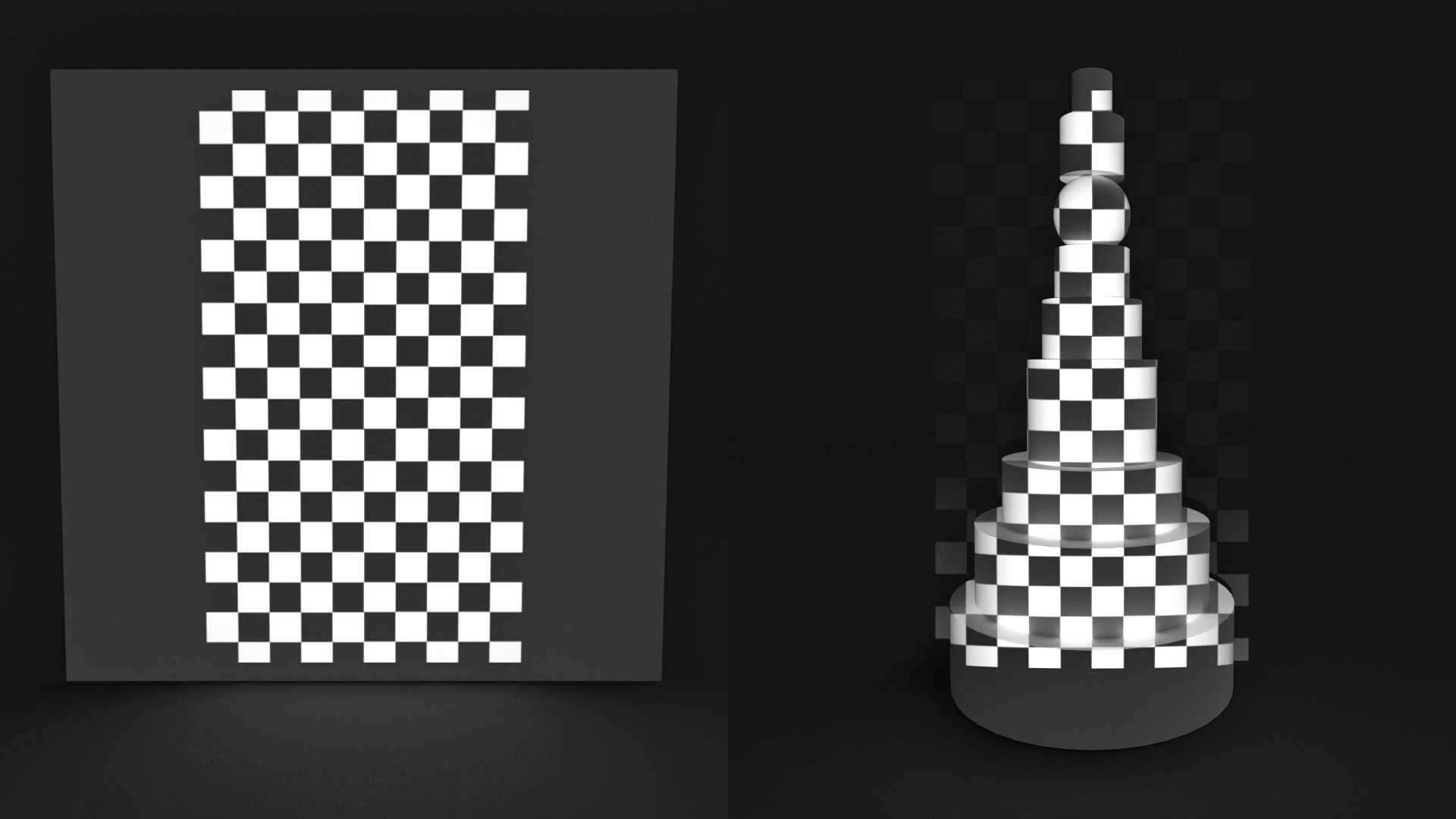
Apart from the fact that the volume model in the lower part is closer to the projector and without changing the distance to the model, the projection does not cover it entirely, it seems that the task to perform mapping has been successfully completed. Needless to say, this is not so:

One has only to look at the result from the side and it immediately becomes clear that the “impudent” problem cannot be solved. In order to understand exactly how the projection emitted by a light source should look like, put a texture on the “cake” and make it “glow” without any projectors:

A quick glance is enough to understand that the distortions are too complex to try to fix the case with any kind of “fit” in the flat texture space.
You can try to improve the situation by moving the projector away from the object. For example, in the pictures above, the light source is located 2 meters from the cake. Let's try to move it 10 meters away and compare the result:

Much better! That's just to make such a projection you need a projector three or four times brighter (for the light intensity decreases in a quadratic dependence, plus the losses in a very long-focus telephoto lens should be taken into account). Also, the projector should allow the installation of interchangeable lenses in principle .
Therefore, we will focus on our inexpensive “universal” projector and a distance of 2 meters (depending on the model you will use, the distance will most likely have to be calculated so that the projection completely covers the object). And then we proceed as follows:
Cross AR Projection
Add a second projector!
The use of two projectors will allow to “pump” the original version of MagicInnovations, providing more freedom for the creative space of the content creator and viewers (due to the increased surface area on which the light falls).
We will perform the “measurements” of the room and the object and immediately determine where we will install real projectors. We will use the results and place the light sources at about the level of the average visitor's eye. Let's look at the result:
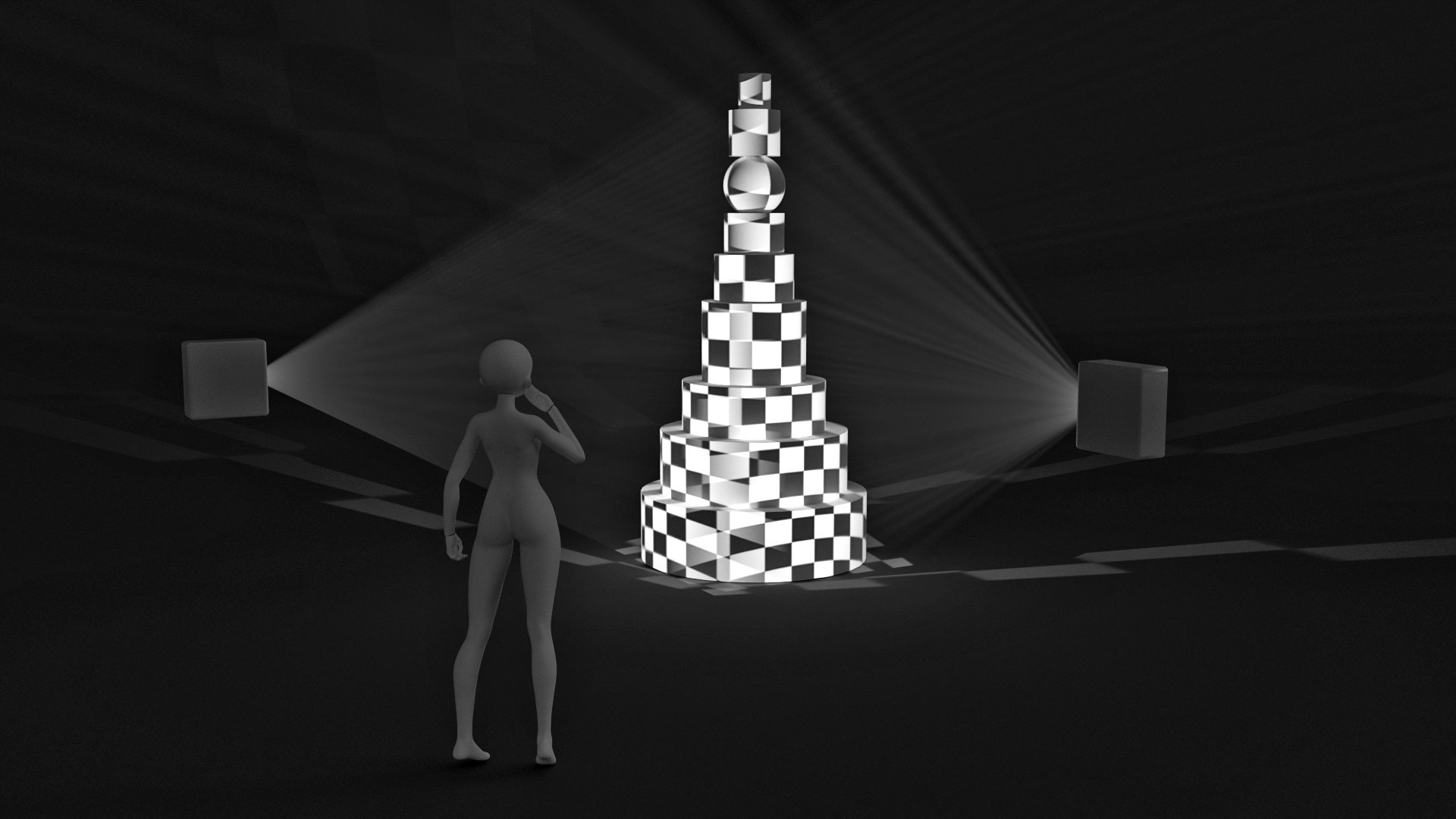
At this stage, both projectors still project the flat texture of the chessboard and the only difference is that the projection now completely covers the visible area of the object for each light source.
But we are not planning to show this disgrace to our viewers, right?

Due to the fact that we have performed the measurements in advance and the location of the light sources in the scene strictly coincides with where we will install the projectors, we will make “feint ears”:
Turn off the lights and turn on the texture (or start the animation) on the object itself. Those. let's prepare everything in order to be able to “record all this action” on camera. Accordingly, we will create two cameras — one for each of the emitters — and arrange and orient them in the same way as our “virtual projectors” . And what will we get? .. That's right! Ready video projection for each of them!
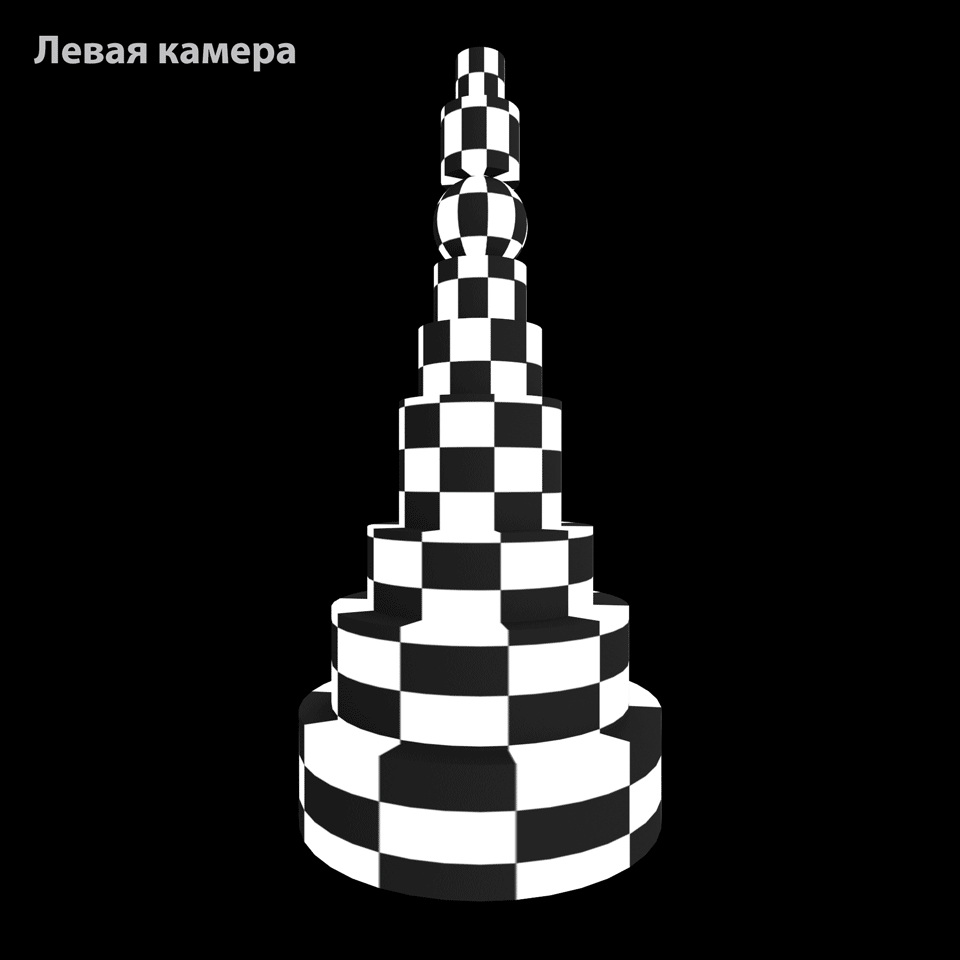
These renders are used as light textures for our projectors. And voila - a ready-made cross-AR projection onto a volume object!

Due to the fact that our cake does not have particularly overhanging elements, projectors can be hung up and higher on the ceiling rail, dropping to the desired height on the rod, so as not to embarrass viewers with towers or tripods with projectors installed in the middle of the hall.
In this version, we placed the projectors at about a meter and a half height. The figure above shows that looking at the scene from a point higher than our projectors, you can notice the shadows formed on the upper cylinders. However, since the average viewer is still less than two meters tall, shadows are not a problem, as can be seen by looking at the result “out of sight” of our viewers in the scene:

In addition, we recall that we “pumped” the original AR-mapping by performing a projection from two points, not one. Thanks to this so-called. The “terminator” (line of the light-splitting line) on the surface of our object will appear only in its furthest part . This gives greater freedom of movement for the audience in the hall.

Of course, you can go even further and illuminate this area with a third projector. Then we will have an AR-projection, which can be viewed at all from any direction. However, in such a case, it would be more logical to distribute the projectors at an angle of 120 ° to each other in order to ensure uniform coverage and surface illumination. The final installation scheme, of course, will also depend on the shape of the object itself, especially if it has many changes in the surface plane angle or a significant area consists of overhanging elements.

Rectangular cake !? What a blasphemy! ༼ ಠ 益 ಠ ༽ ノ
Further - the freedom of creativity!
We animate the coordinates of the textures (or even rotate the objects themselves, but without changing their shape), and also perform the transition from scene to scene in camera projections using a conventional mask (by the way, you can see the grid of geometric shapes in the original MagicInnovations clip , which was probably used in the software to create a projection). Well, a little motion design'a here and there, to "dilute" a little and add diversity, so that it looked "more expensive."
This can be implemented in Blender or any other more or less “adult” 3D software. In it, it is possible in principle to create such a virtual prototype for demonstration to the customer, without having information about the dimensions of the future object of projection. And to save time and effort, particle animation can be done either using standard After Effects tools, or using something more powerful, like Trapcode Particular, Form, or Mir , using our renders from the eyes of projectors as masks. The client does not need to know how his order was made, if he is satisfied with the price and agreed on the desired end result. Well ... At least as part of creating visualizations.
Of course, the complexity depends on the tasks, but then the cost of the work depends on the complexity.
Note on merging (blending) of several projections
In this case, we were lucky: a sphere and cylinders were used as objects, which, coupled with projectors at an angle of 90 °, provided a natural light gradient in an area where the light of the two projectors intersects (that is, in front of the “cake”). However, such a “freebie” will not always be necessary, and it will be necessary to specifically “dim” the brightness in the corresponding areas of our video recording for mapping so that such areas are not overexposed .
Professional (they are also Epson installation projectors ) especially for this purpose have built-in support for Edge blending and Epson Projector Professional Tool software , which allows you to make a subtle correction of the result and compensate, say, for zoom lens distortion.
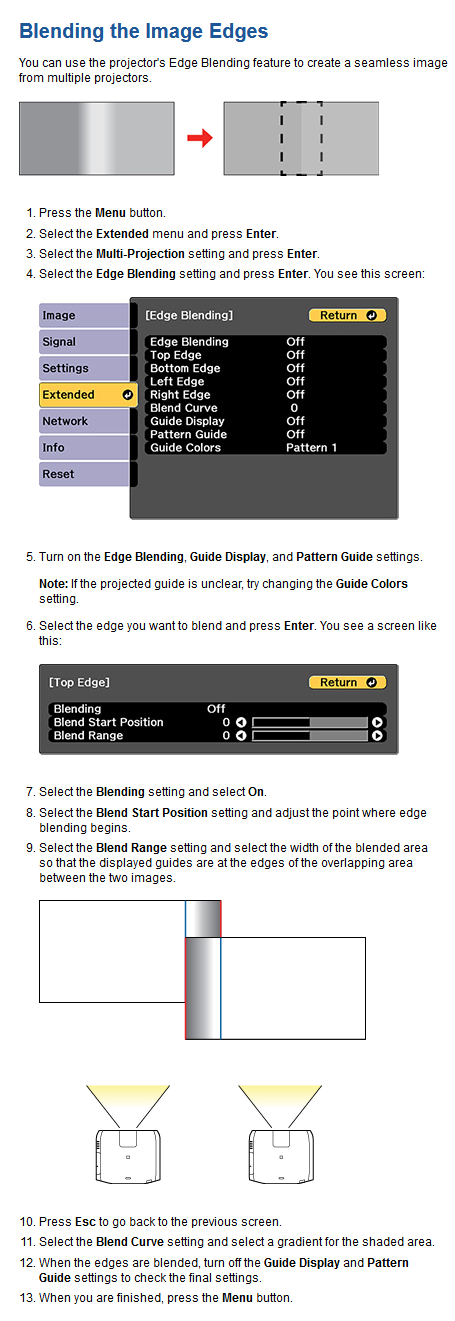
Tricky plan: roll the wheel
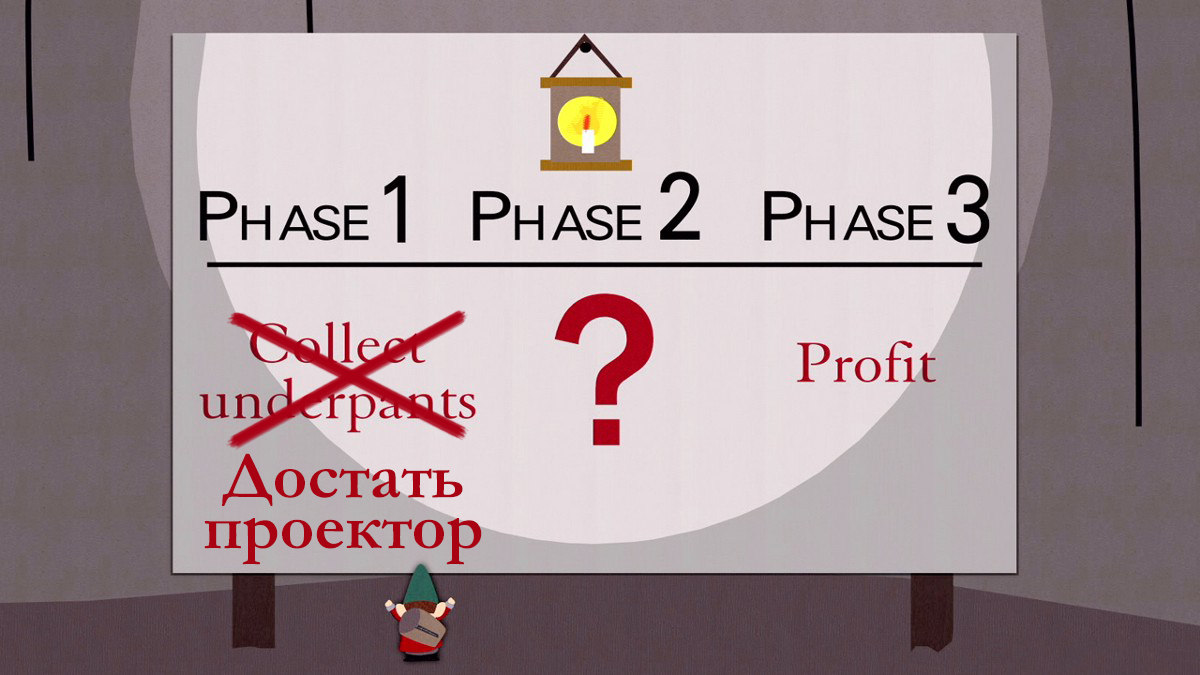
This is the “business idea” from the sofa analyst. According to our colleagues involved in projection technology, such video-mapping is steadily gaining popularity. And there is a demand for it.
Of course, the look is very superficial and the questions of finding customers remain. Fortunately, in the era of social networks, youtube and instagram, which are becoming more and more popular every day, there are platforms for finding clients, a question for a budget and a set of experience and a portfolio (where to go without it).
And there is?
And now I’ll appeal to you, dear habravchane: do you know examples of spectacular installations, implemented by small companies , for example, in Russia? Ours, especially the large ones that we did with our partners, we already know. It would be interesting, so to speak, to look at others.
Your recommendations? Or maybe you have experience of similar AR-projection?
Source: https://habr.com/ru/post/453118/
All Articles